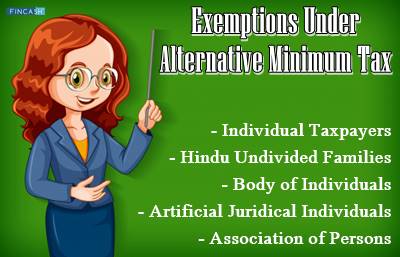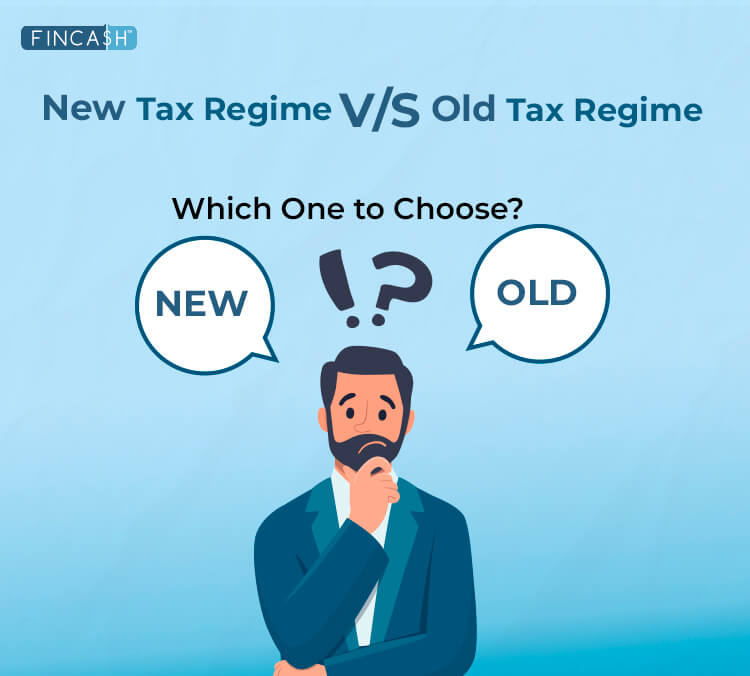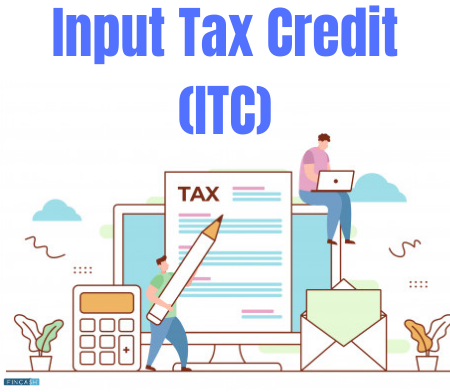
Table of Contents
All About Alternative Minimum Tax
Every Industry seeks investment for growth and development. In other words, investments are energy and productivity boosts for companies to become successful in a competitive Market environment. In order to boost investment in various industries in India, the government introduced several income tax deductions.

Registered and eligible taxpayers can take the benefit of these deductions and exemptions to reduce the burden of the Income tax liabilities. However, regular funds are also required by the government to help the revenue of the country to grow. Therefore, the Finance Act 2011 introduced the Alternative Minimum Tax (AMT), which is quite different from the Minimum Alternative Tax (MAT).
What is Alternative Minimum Tax?
Alternative Minimum Tax is an alternative to the standard income tax regime like the name suggests. The primary objective of this tax is to ensure that the taxpayers do not overuse tax deductions and the available exemptions or opt for the alternative to not pay tax at all.
This method of tax payment came into force in 2011. It was applicable to all non-corporate taxpayers.
Application of AMT
The provisions of alternative minimum tax are applicable to all non-corporate taxpayers who have claimed the following:
a. Section 80H to 80RRB
This does not include 80P. These deductions are related to profits and gains in specific industries like hotel business, small scale industrial undertaking, house projects, export business, development of infrastructure, etc.
b. Section 35AD Deduction
Under this Deduction, 1005 deduction is allowed based on Capital expenditure incurred for specific businesses such as the operation of cold chain facilities, production of fertilizers, etc.
c. Section 10AA Deduction
Under this deduction, a deduction profit varying from 100% to 50% is given to units in Special Economic Zones (SEZs).
Talk to our investment specialist
Exemptions Under Alternative Minimum Tax
Remember that alternative minimum tax is applicable if you are a taxpayer with an adjusted annual income of more than Rs. 20 lakhs, It is also applicable to you if you have claimed income tax deductions under Section 80H to 80RRB of the IT Act. Furthermore, if you have had deductions under Section 10AA and Section 35D, you will be required to follow the alternative minimum tax regime.
But if you have an annual income lesser than Rs. 20 lakhs and are among the following categories, you will not be required to comply with alternative minimum tax:
- Individual Taxpayers
- Hindu Undivided Families (HUFs)
- Body of Individuals (BOIs)
- Artificial Juridical Individuals
- Association of Persons (AOPs)
Note: The Finance Bill 2020 proposes an alternative tax regime under new section 115BAC for individual and HUF taxpayers. This new regime provides for lower tax rates and also removes tax exemptions and deduction, in a manner quite similar to the alternative minimum tax. The benefit of lower tax rates is for taxpayers in the annual income category for Rs. 5 lakhs to Rs, 15 lakhs.
Example of Alternative Minimum Tax
As a taxpayer, you will first have to calculate your liability as per the standard income regime. Deductions covered under alternative minimum tax like Section 80H to 80RRB, Section 10AA, Section 35AD, etc should be added to the Tax Liability.
The amount you will get after adding these deductions is your adjusted income. An alternative minimum tax of 18.5% will be applicable to this adjusted income along with additional cess and surcharge.
This rate is lower than the peak Tax Rate at 30%. The taxpayer is allowed a tax credit of the excess alternative minimum tax that is paid over the regular Income Tax Payable. The credit is allowed to be carried forward and also set off for a period of 15 years, in the year when the regular income tax payable is more than the alternative minimum tax payable for that year.
Sooraj has calculated his adjusted income and has an annual income of Rs. 25 lakhs. He has claimed a deduction of Rs. 25,000 under Section 10 AA.
Adjusted Total Income= Regular Income + Deductions
| Details | Description |
|---|---|
| Regular Annual Income | Rs. 25 lakhs |
| Deductions claimed Under Section 10AA | Rs. 25,000 |
| Deductions Claimed Under 80H to 80RRB | Nil |
| Deductions claimed Under Section 35AD | Nil |
| Adjusted Total Income | Rs. 25.25 lakhs |
Therefore, the deduction of Rs. 25,000 will be added to Sooraj’s annual income. This makes his total income for the year as Rs. 25.25 lakhs as adjusted income. The alternative minimum tax will be applicable.
Conclusion
Alternative Minimum Tax is a boon if applied correctly. One should know the right usage of saving tax and keep up with the norms as specified by the government.
All efforts have been made to ensure the information provided here is accurate. However, no guarantees are made regarding correctness of data. Please verify with scheme information document before making any investment.












